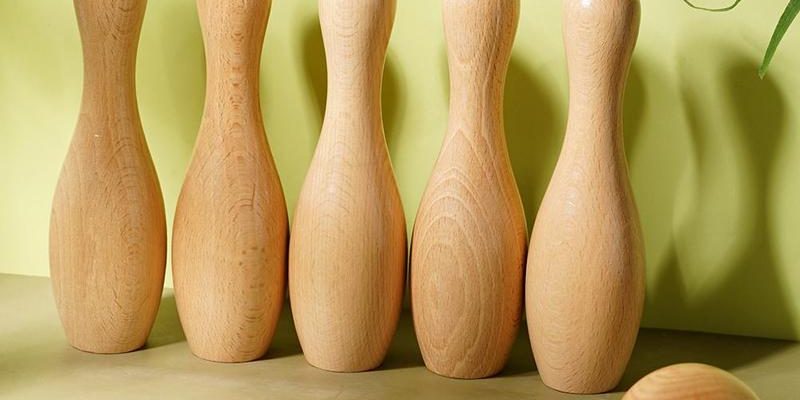Bowling pins might seem simple, but their construction is the result of careful engineering and design. In this blog post, we’ll delve into the materials and science behind the making of bowling pins.
Wooden Bowling Pins
Traditionally, bowling pins were crafted from hardwoods like maple and pine. These woods were chosen for their balance of weight and durability. Each pin is typically about 15 inches tall with a tapered design that aids in pin action.
Pin Weight Distribution
The weight distribution within a bowling pin is carefully calibrated to ensure that it stands upright after being hit by a bowling ball. The bottom of the pin is heavier, while the top is lighter. This design helps maintain pin stability while allowing for pin action when struck.
Synthetic Bowling Pins
In recent years, synthetic materials like high-density polyethylene (HDPE) have gained popularity in pin construction. Synthetic pins offer advantages such as consistent weight and durability. They are also less prone to wear and tear, resulting in more predictable pin action.
USBC Specifications
The United States Bowling Congress (USBC) sets strict standards for bowling pins. These standards cover dimensions, weight, balance, and even the pin’s coating. Ensuring that pins meet these specifications is crucial to maintaining fairness and consistency in the sport.
Pin Maintenance
Bowling centers are responsible for maintaining their pins. Regular inspections and maintenance ensure that pins are free from cracks, chips, or excessive wear. Damaged pins can affect scoring and the overall bowling experience.
Conclusion
The construction of bowling pins is a blend of art and science. Whether they’re made from traditional wood or modern synthetics, the careful design and adherence to standards ensure that every roll is fair and exciting for bowlers.






